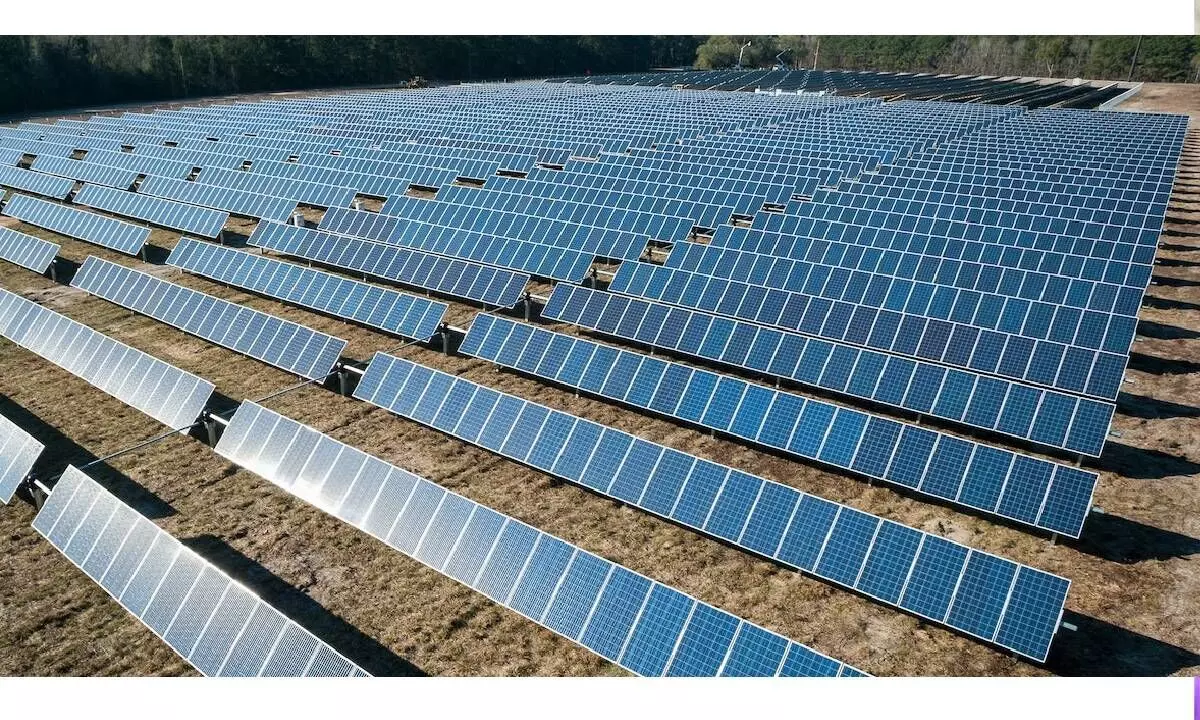Rise in installations point at a sunny 2024 for Indian solar sector
As 2023 draws to a close, the country’s solar sector situation is nothing to write home about.
image for illustrative purpose

As 2023 draws to a close, the country’s solar sector situation is nothing to write home about. In fact, solar capacity additions fell nearly 47 per cent compared to 10.5 GW installed in the first nine months (9M) of 2022. During this year’s 9M, 5.6 GW of solar was installed in India, which is a significant drop. That’s not all. Utility-scale installations dropped more than 54 per cent year-over-year (YoY) to 4.2 GW. The slower growth (compared to rising prices earlier) even as developers and installers push procurement to the last minute, can be attributed to declining prices. If the latest study by Mercom India Research is anything to go by, it has been an underwhelming year for installations in India so far. However, the good news is that, barring significant negative developments, installations in 2024 is expected to grow exponentially. Hopefully, the market can handle the expected rush in Q1 2024 and thrive thereafter. There are some indications towards that. In Q3 2023, India added 1.9 GW of solar capacity while installations increased almost six per cent quarter-over-quarter (QoQ) but dropped nearly 34 per cent YoY. Large-scale solar projects accounted for nearly 77 per cent of capacity additions in Q3 2023, with rooftop solar making up for the rest. Over 1.4 GW of large-scale solar were added in the quarter, up 4.1 per cent QoQ and down nearly 43 per cent YoY.
The country's utility-scale solar development pipeline stood at nearly 77 GW as of September and over 68 GW of projects tendered were pending auction at the end of Q3 2023. That things are looking up can be seen from the fact that in Q3 2023, solar capacity additions increased after declining for two straight quarters. Large-scale solar installations during the quarter were primarily driven by the projects commissioned for commercial and industrial customers. Interestingly, research firms like Mercom feel that extensions granted to several large-scale solar and hybrid power projects and those facing delays due to land and transmission issues primarily affected installations in 9M 2023. The challenges in securing transmission connectivity increased further with the change in project timelines considered for the grant of connectivity under the amended GNA regulations. During Q3, the project developers also lacked clarity on application procedures under the amended regulations for long-term access to transmission networks.
However, the Central Electricity Regulatory Commission (CERC) issued clarifications towards the quarter's end, which is expected to ease the process over the next few quarters. Several projects stuck in the habitat of the Great Indian Bustard (GIB) are still waiting for the Supreme Court order to receive transmission connectivity. While making a final analysis and assessment of the country’s solar sector in the year going by and for the coming year, one must remember some important facts like: the oversupply of modules in China further lowered the average selling prices of solar modules, which have fallen consecutively over the last four quarters. One must also take into account the fact that average large-scale solar project costs fell 4.9 per cent QoQ and 13.4 per cent YoY. Project costs have decreased for three quarters in a row beginning in Q1 2023 after rising for ten consecutive quarters. There are reasons to hope that in 2024, it will be sunny side up for India.

